There’s always the odd expert who says «he knows someone who knows someone who has the tiniest breeding farm in Estremadura, and makes a crazy good jamón», of course. But Joselito is something just a tiny bit more serious: with a turnover of about 40 million euros in 2017 and a constant growth in double figures in the past few years, the brand born in 1868 in Guijuelo, less than 6,000 inhabitants in the province of Salamanca, Castilla y León, is now a synonym of exceptional jamón all around the world – or at least among that part of humanity that appreciates cured pork – as Joselito is available in 56 countries.
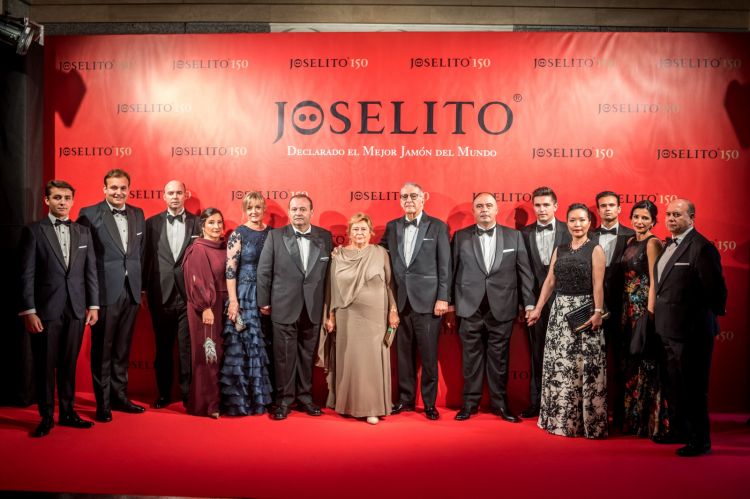
A group photo of the Gómez family during the celebration of Joselito’s 150th anniversary
We’ve mentioned a year: 1868. That is to say 150 years precisely since this excellent gastronomic company was founded. One century and a half under the
Joselito brand though it could have easily been called "
Gómez", the family name that made its history: first
Vicente, the founder of what was then a simple producer of sausages, then came his son
Eugenio (who started bringing pigs to Guijuelo from Estremadura and Andalusia), then
José (known as
Joselito, reminds you of something?),
Juan José, and now brothers
Juan Luis and
José Jr (born in 1956, now CEO at
Cárnicas Joselito), up to the currently 25-year-old
Juan, 6th generation, who welcomes us in Madrid during the celebrations for
Joselito 150.
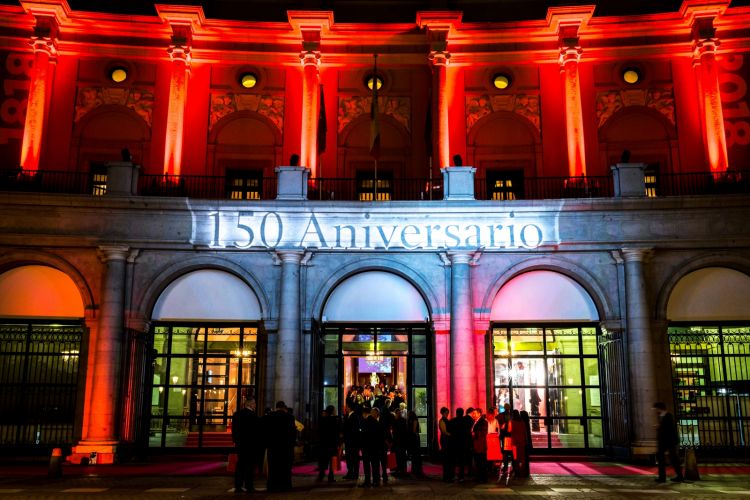
Celebrations at the Teatro Real in Madrid for Joselito’s 150th anniversary
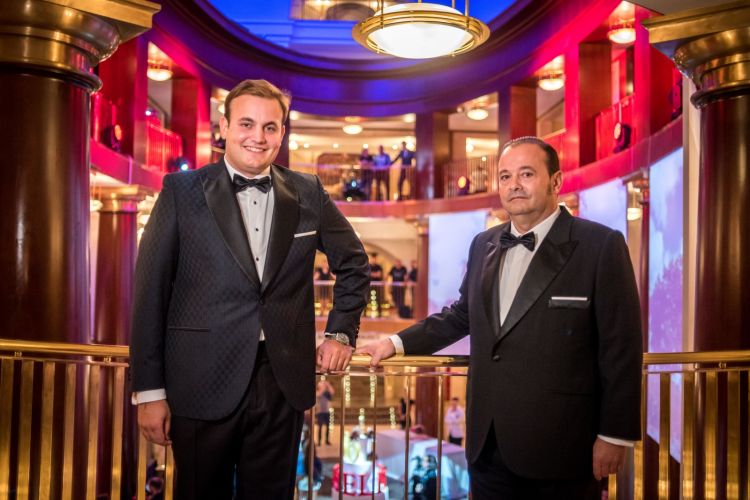
Juan andJosé Gómez, 6th and 5th generation
He explains: «We’re a small company, we only make products of the highest quality. We focus on the latter, rather than on quantity», which varies every year, just like what happens with the best wines in the wine industry. Small company? It depends on the point of view: what with privately owned and rented land, they have some 170,000 hectares in Estremadura – ten times Milan, to give an idea – of
dehesa, halfway between Mediterranean forest and prairie, a wood ecosystem rich of oaks which combines farming with forestry and breeding, safeguarding biodiversity.
It’s a precious environment, and
Joselito works hard to protect it by planting each year almost 80,000 oak trees with the goal of reaching 2.4 million in three decades; it’s the perfect place where Iberian pigs can grow freely. They feed with what they love best, in abundance: acorns, first of all, some 8-10 kilos per day, plus fresh grass, 3 kilos, their weight going from 23 to 180-190 over two
montaneras, the autumn fattening period, when acorns fall.
As there’s no addition of food coming from outside, and all the pigs eat can be found outdoors, they’re subjected to the weather: years with a perfect (high) level of rain will be fertile for the production of acorns and grass, so that it will be easy to feed the pigs in the pastures. «On average, every animal has three hectares available to himself, to find food and water – says
Juan Gómez – But things change every year. These days, two hectares are enough, because there’s plenty of food, while in 2017 we had to leave six hectares to each animal, because food was scarce». So the number of the pigs changes too: let’s say the peak is 80,000 animals, half of which are destined to become ham – and
paletas, chorizo, lomo or
salchichón – between January and March, the season of the
sacrificio.
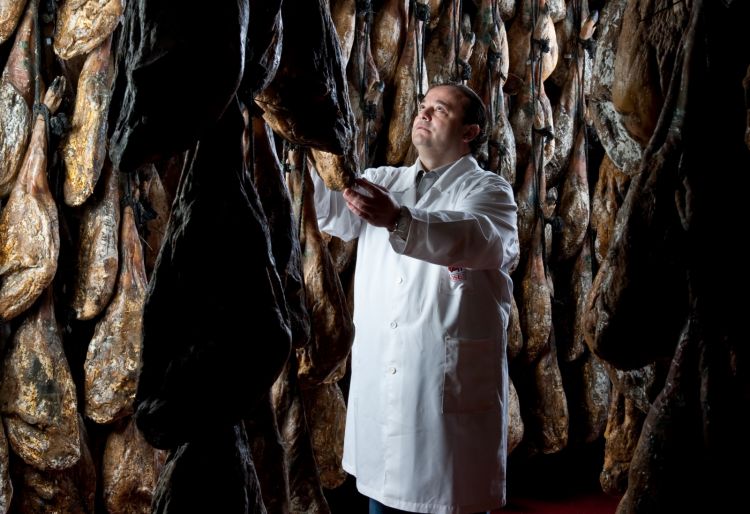
José Gómez checks the ageing
The ageing takes place in Guijuelo, in natural drying rooms and cellars, with an almost constant humidity between 60 and 80% and an average temperature of 14-18°C; the town is famous for its gusts of wind, for the cold and dry air that comes from the three sierras surrounding it (Gredos, Béjar and France) and creates the perfect conditions for the ageing; indeed it is at 1000 metres above sea level, at the same altitude of another very famous place for the production of cured meat, namely Jabugo (Huelva).
All these factors enhance the craftmanship at
Joselito, though it is applied to remarkable numbers and to a genetic selection of the best animals destined to reproduction, which has been conducted for decades and decades, so much so there’s now a real "Joselito breed",
el cerdo feliz, the happy pig. This is what influences the “vintage”, once again sharing a concept used for wine: «We classify all our
jamón based on the year and the place where the pig was bred -
Juan Gómez pointed out – Because not all
dehesas are the same, some are placed more to the north, to favour one type of diet, the other more to the south and so on».
The best
Joselito of the past few decades, he says, was in 2005, «a golden year, there were plenty of acorns and grass, which is an important natural antioxidant, essential for a prolonged ageing». Don’t try to look for this
Joselito 2005: the last leg – matured 13 years, a record. On average, the ageing is around 3-4 years. And never less than 36 months – was enjoyed at the
Gómez’s three months ago: «It was simply incredible». The 2015, if it’s any consolation, is thus described: «
Montanera with mild temperature and humidity. The fat is silky, pleasant, and melts in your mouth. The texture is smooth, the muscle is firm, the infiltrations are perfectly blended. Relaxing aroma, a vegetal finish of green apple, very subtle, penetrating all five senses».
A delicacy appreciated everywhere these days. 70% of the production stays in Spain, following a choice of the company, «we’re Spanish, the product is Spanish, people from my town must be able to enjoy it». The rest goes to the 55 countries where the
Joselito brand is available, divided into almost identical market shares. Both facts show how demand exceeds the offer so products are always sold out. The international boom, however, is rather recent. CEO
José Gómez explained some time ago how in the days of his grandfather
Joselito, third generation, everyone would be happy to exchange three kilos of
jamón for one of pancetta, «with that kilo and a bag of potatoes, you could feed a family for a month».
Success came gradually, the result of hard work. For instance 35 years have gone by since the first
Joselito jamón crossed the border: «our debut abroad was at
Harrods». The choice of the prestigious department store in London was not made by chance: the
Gómez’s fifth generation worked hard to make
Joselito a global brand of excellence: «Since I was a child, my dream was to have my
jamón available in the most prestigious places. Hence the strategy has always been to reach the best gourmet stores, as well as the most famous restaurants, capable of giving value to the quality of our products».
José accomplished this with a meticulous, constant and tireless work. Lots of marketing, brilliant ideas (such as the
Joselito collections, very limited series luxuriously dressed, sometimes by great artists. He got the intuition of segmenting the products according to vintage, like wine, and presenting
vintage and
reserva jamons.Some of these exclusive vintages reached striking prices: up to 40,000 euros at auction). And he also started a process of evangelization, so to speak: «Export implies a gigantic effort. It’s not just about explaining the product, a big educational task, taking it to a place and making people taste it. There’s lots of protocols and other stuff you need to do to open the borders».
The patron recalls a tasty anecdote. «In the beginning I had a strong sense of inferiority: not right away, but later when I saw how the producers from other countries presented their ham. I noticed the attention that French and Italian producers paid to image... They gave us
sopas con honda [literally "
soup with a slingshot". Which is a Spanish expression that means "they proved they were much better than us]. I would put my ham in bags with six or seven pieces, then came a guy from Italy who would pull out his San Daniele, perfectly wrapped and presented in a nice cardboard box». He adds: «Italians are the ones who have more and are better at selling their product all around the world».
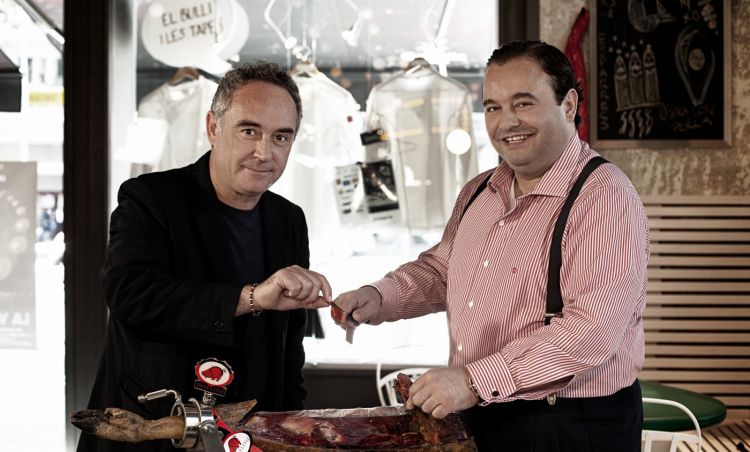
Ferran Adrià and José Gómez
To make it big, the guys at
Joselito joined forces with fine dining. And in particular with the school that dominated the years at the turn of the millennium, that is to say the Spanish school. The most recent link was
Joselito Lab, a pioneering research project created with
Ferran Adrià in 2013, and this is what he says, without any need for translations: «
Joselito es un jamón único, perfecto. Una inspiración constante para todos los que amamos la gastronomía».
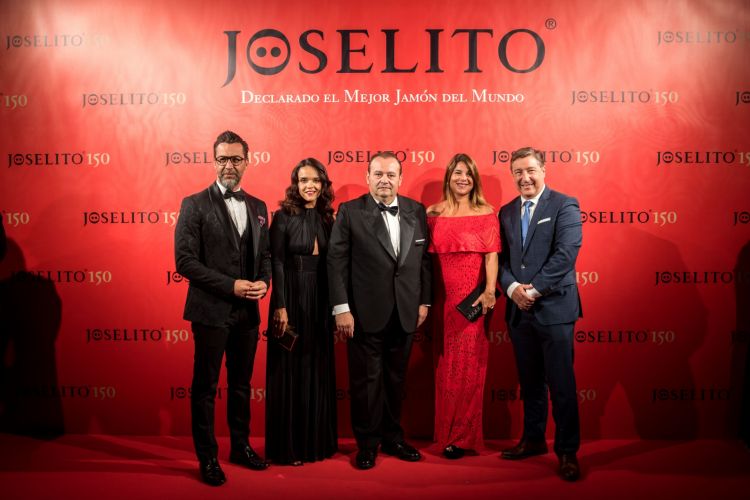
José Gómez with Quique Dacosta and Joan Roca (and their wives) for the 150’th anniversary of Joselito
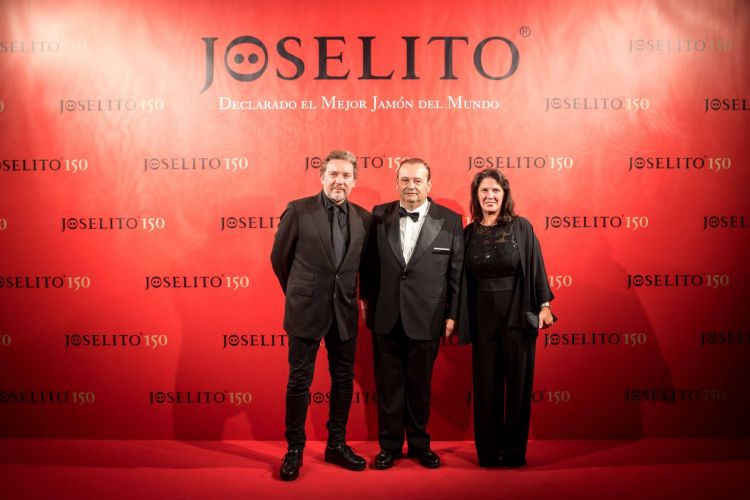
With Albert Adrià and his wife
Today the
Lab is also a collection of recipes in the shape of a web app dedicated to the creation and culinary research of Joselito Iberian products, developed thanks to the inspiration of the best 3-starred international chefs: in 2014 the protagonist was Italian
Massimiliano Alajmo, then came Dutch
Jonnie Boer, Japanese
Seiji Yamamoto, German
Joachim Wissler, and this year French
Yannick Alleno.
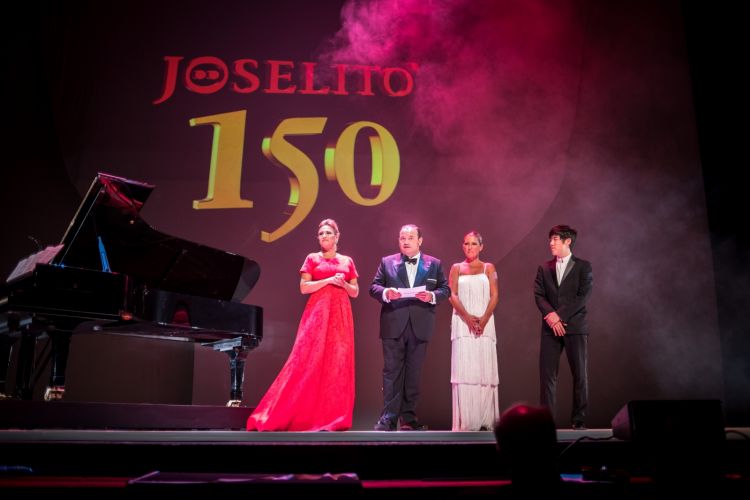
Some moments from the show and the following party Teatro Real
And speaking of
Alajmo: he was at the big party for
Joselito’s 150th anniversary on the 2nd of October. With him and his brother
Raf, there were other important names in Italian fine dining:
Matteo Baronetto,
Giancarlo Morelli,
Moreno Cedroni,
Pino Cuttaia,
Enrico Buonocore patron at
Langosteria,
Massimo Minutelli of
La Griglia di Varrone... The attention however, hope they won’t mind, was more focused on the real protagonists of the night, that is to say the
Joselitoham, like the magnificent
Vintage 2011 (over 84 months of natural ageing), handed to the wise hands of the 18 skilled
maestros cortadores.
Translated into English by Slawka G. Scarso